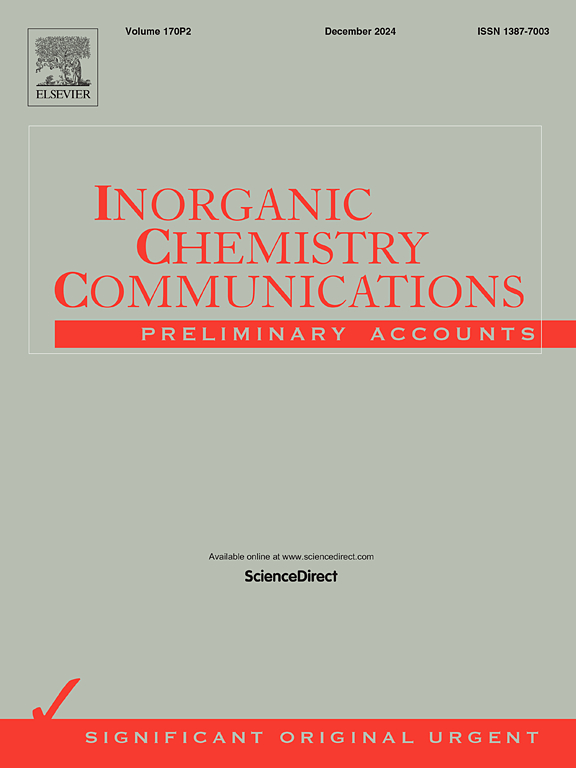Synthesis, characterization of novel CuO doped-TiO2 nanomaterials and their applications in photocatalytic degradation of herbicide 2,4,5-trichlorophenoxyacetic acid in water
IF 4.4
3区 化学
Q1 CHEMISTRY, INORGANIC & NUCLEAR
引用次数: 0
Abstract
The herbicide 2,4,5-trichlorophenoxyacetic acid (2,4,5-T) is a component of Agent Orange that is a serious emerging organic pollutant in the environment. In the present study, the extensive treatment of 2,4,5-T using titania nanoparticles (TiO2-NPs) doping with copper oxide (CuO) for photocatalytic degradation was studied. The CuO-doped TiO2 nanoparticles (CDTN) were thoroughly examined by TEM, FT-IR, BET, Raman, UV–Vis-DRS spectroscopic methods, BET and ζ potential measurements. The photocatalytic degradation efficiency of 2,4,5-T enhanced significantly after adding CuO compared to bare TiO2-NPs. Effective parameters for 2,4,5-T degradation were optimized and found as pH 4, CDTN dosage 33.3 mg/10 mL, and 120 min of photocatalysis duration. The CDTN material indicated as a novel photocatalyst with the degradation performance of 95.32 % under visible light. The degradation of 2,4,5-T using CDTN followed the Langmuir-Hinshelwood model. Our study demonstrates that the CDTN is an excellent material for 2,4,5-T photo-degradation in water environment.

新型CuO掺杂tio2纳米材料的合成、表征及其在水中光催化降解除草剂2,4,5-三氯苯氧乙酸中的应用
除草剂2,4,5-三氯苯氧乙酸(2,4,5- t)是环境中一种严重的新兴有机污染物橙剂的组成部分。在本研究中,研究了二氧化钛纳米颗粒(TiO2-NPs)掺杂氧化铜(CuO)光催化降解2,4,5- t。采用TEM、FT-IR、BET、Raman、UV-Vis-DRS、BET和ζ电位等方法对cuo掺杂TiO2纳米粒子(CDTN)进行了全面的表征。与裸TiO2-NPs相比,添加CuO后TiO2-NPs光催化降解2,4,5- t的效率显著提高。优化了2,4,5- t降解的有效参数为pH 4、CDTN投加量33.3 mg/10 mL、光催化时间120 min。CDTN材料在可见光下的降解率为95.32%,是一种新型的光催化剂。CDTN对2,4,5- t的降解遵循Langmuir-Hinshelwood模型。我们的研究表明,CDTN是一种在水环境下光降解2,4,5- t的优良材料。
本文章由计算机程序翻译,如有差异,请以英文原文为准。
求助全文
约1分钟内获得全文
求助全文
来源期刊

Inorganic Chemistry Communications
化学-无机化学与核化学
CiteScore
5.50
自引率
7.90%
发文量
1013
审稿时长
53 days
期刊介绍:
Launched in January 1998, Inorganic Chemistry Communications is an international journal dedicated to the rapid publication of short communications in the major areas of inorganic, organometallic and supramolecular chemistry. Topics include synthetic and reaction chemistry, kinetics and mechanisms of reactions, bioinorganic chemistry, photochemistry and the use of metal and organometallic compounds in stoichiometric and catalytic synthesis or organic compounds.
 求助内容:
求助内容: 应助结果提醒方式:
应助结果提醒方式:


